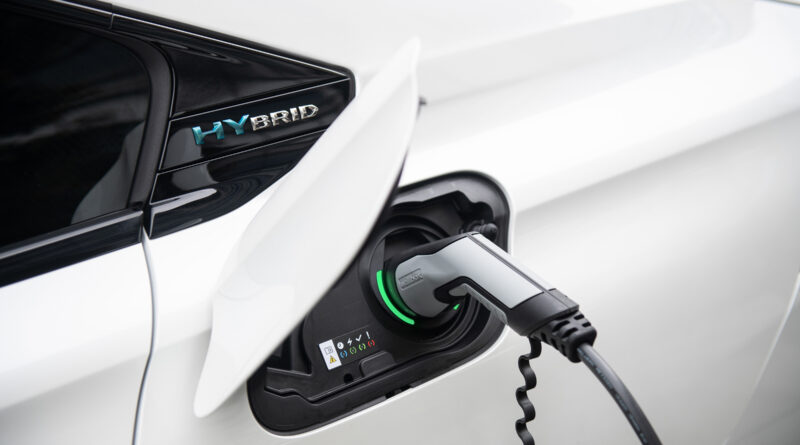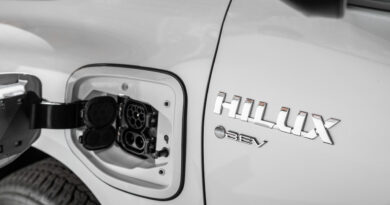Time to unplug phoney PHEV fuel ratings: Australia’s “electrified” automotive future isn’t all its cracked up to be | Opinion
Imagine, for one wild moment, that McDonald’s was allowed to promote itself as a purveyor of
health foods, just because it has salads on its menu (mind you, it’s already allowed to call its
establishments “restaurants”, so it might not be that much of a leap).
We all know the salads are there as window (salad) dressing, and an excuse for someone to walk
in seeking something nutritious and then change their mind and have a Big Mac (I have seen a
suspiciously skinny colleague order one once, and the Macca’s staff looked confused and had to
go out the back and search around for a while to find one, presumably locked away in a glass box
that they had to use an Emergency Hammer on).
No-one would fall for such a flim-flam of fakery, of course, and yet, in some cases at least, the
wider world is being asked to swallow something similarly slimy from car companies, in the shape
of hybrids and plug-in hybrids.
READ MORE:
You might have noticed, and I certainly have, that the car company execs have stopped talking about electric vehicles, and begun describing the Australian car market of the near future using such vague and nebulous terms as “electrified” now that a New Vehicles Emissions Standard looms.
This catch-all allows them to make it sound like, by 2030, there will be a huge number of proper and actual zero-emission EVs on the road, when what they are actually including are hybrids and plug-in hybrids, which, let’s be honest, still use their petrol-burning combustion engines a lot, and sometimes almost all of the time.
Audi boss Jeff Mannering recently told me that he thinks the tipping point for this country will come
as soon as 2028 or 2029, that being the point at which we buy “more EVs and plug-ins than ICE
cars”. Mr Mannering and I were discussing the new Australian NEVS scheme, of which he is a big
supporter, but it’s interesting to look at the detail of what he said.
“What we now have to look at, you know, basically is every hybrid you sell, you can sell an RS for
that,” he said.
“So now I’m thinking, okay, I sell a lot of RSs, how many hybrids do I need to sell?
“Even internationally, the global strategy for Audi is that, from 2026, ICE development stops. But the cars will run until 2033, 2034. And because it’s the next generation of cars that come, it changes
what engines we bring. So you probably focus a little bit more on what plug-in hybrids do we have?
“It helps the calculation. I think, and I can tell you, every automotive company in this country is
doing exactly what we’re doing, is calculating what do we need to? Because I think we have a
responsibility to be compliant. I’m not going to get to July next year and say ‘we don’t care about it,
we’ll just keep paying fines.’ You can’t keep paying fines. And it’s not a good look, either.”
To be fair, Mannering did also talk up the Q4 E Tron that’s coming, which is likely to fall under the
LCT limit and should be a game-changer for Audi in the EV space, indeed he described it as one of
the most important cars Audi has ever launched here. But consider this stat, just for one moment:
last year, just 2.8 per cent of the 19,039 cars Audi sold in Australia were powered by electricity.
And so we come to plug-in hybrids, and their supposed fuel efficiency. I just spent a week in the BMW XM Label Red, a mega plug-in hybrid, which claims an offical combined fuel-economy figure of 1.7 litres per 100km.
Not only is that figure theoretical but, in the hands of anyone cashed up enough to pay the
$349,900 asking price for this thing, and thus something of an enthusiast who is more likely to be
tempted by its 4.4-litre twin-turbo V8 than its 27.5kWh battery, it’s utterly implausible.
And yet, BMW – and every other brand – is allowed to claim that 1.7 number on its sticker, it can then claim a reduction in its over all CO2 output while continuing to sell not only this car (which would be lucky to achieve 20L/100km in the real world), but another combustion-engined car to match it.
It’s worth noting, also, that BMW doesn’t really expect owners to utilise its theoretical, 83km of EV-
only range very often, because they haven’t even engineered the car to take fast charging. The
battery can be charged at max of 7.4kW (AC), which equates to more than four hours on a charger
to boost it back up to 100 per cent from flat, which, again, would only get you 83km of hugely
theoretical zero-emission range (honestly, using this car in EV mode would be like buying hugely
expensive speakers for your stereo and then playing it only in Mute).
Yes, this is a slightly notional example because there are only 500 Label Red versions in the world,
and just 30 have been assigned to Australia, but it’s merely an extreme take on why selling
plug-in hybrids works so well for big car companies.
Which makes it so interesting to watch which companies are going all-in on EVs, and which are
suddenly becoming very interested in selling hybrid variants (or sticking with them as their main
plan, a la global giant Toyota).
So just imagine, again, that McDonald’s was allowed to claim that the number of calories it sold
down the throats of Australians ever day should be averaged out across the salads that they could
theoretically eat, rather than the shakes and shite they’ll actually eat.
Would anyone buy that? I think not. But I do think we might be getting stiffed with some very
theoretical hybrid mathematics.





I had a plug-in hybrid Holden Volt for a couple of years before buying a long range BEV in 2019. It was only ever a stop gap until there was a BEV that suited us at a price we could afford. We plugged it in as diligently as anybody ever could after every single local trip. So, we never used petrol for local driving. Even as highly motivated, diligent plugger-inners, we only managed to get average fuel consumption that was almost twice its highly exaggerated rating.
This was because we also took it on a few longer trips out of town. One short holiday away, even plugging in at accommodate when we could, used as much petrol as was avoided by many weeks of local purely electric driving.
The NVES should use more realistic ratings for the consumption of PHEVs, which are 2x the rating in the hands of diligent users and far worse in the hands of people who don’t bother to plug them in as often. In a European study recently, actual average fuel consumption was 3.5x their ratings.
“Shakes and shite” – bang on the money.
Again and again our bottom dwellers (leaders) soften, dilute, divert and distract until reality is obscured and meaning is lost.
Australia, land of the over-sized Yank Tank, home to the most poisonous fuel outside of all other developed economies. No emerging energy policy. No concept of long term planning. Resources squandered and opportunities lost.
Our legislation lacks teeth, because our leaders lack balls.
Fuel efficiency ratings have always been “theoretical” because they’re based on a standardised drive cycle covering a range of driveline loads and distance stages. If a vehicle owner was able to drive the specified cycle, they would possibly achieve close to the rated efficiency, but clearly that doesn’t happen. Rather than just bag out the standard, what do you suggest Stephen? That Australia devises its own drive cycle that’s more relevant to local conditions and “typical” use cases here? And what would that look like? A quick drive to drop the kids at school and then to the shops and back home? A long commute on a motorway, then bumper to bumper for the last 5 km to a workplace? Or a multi-stop workday drive for a courier or community nurse? It’s really not possible to summarise all the ways a car can be used in a single drive cycle – that’s exactly what makes ICE cars so useful. The XM Label Red is a complete red herring in this discussion though.
Red herring. I see what you did there.